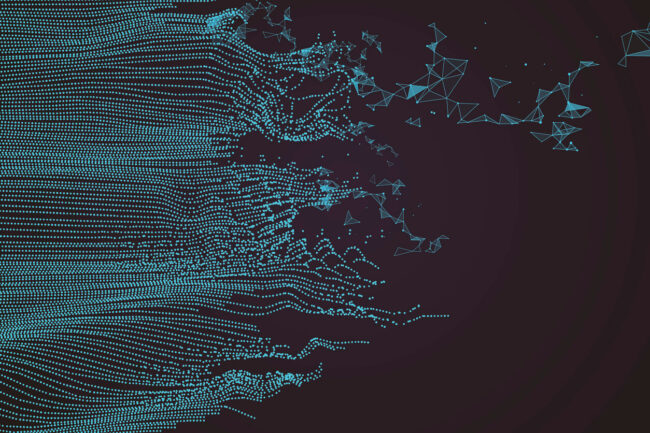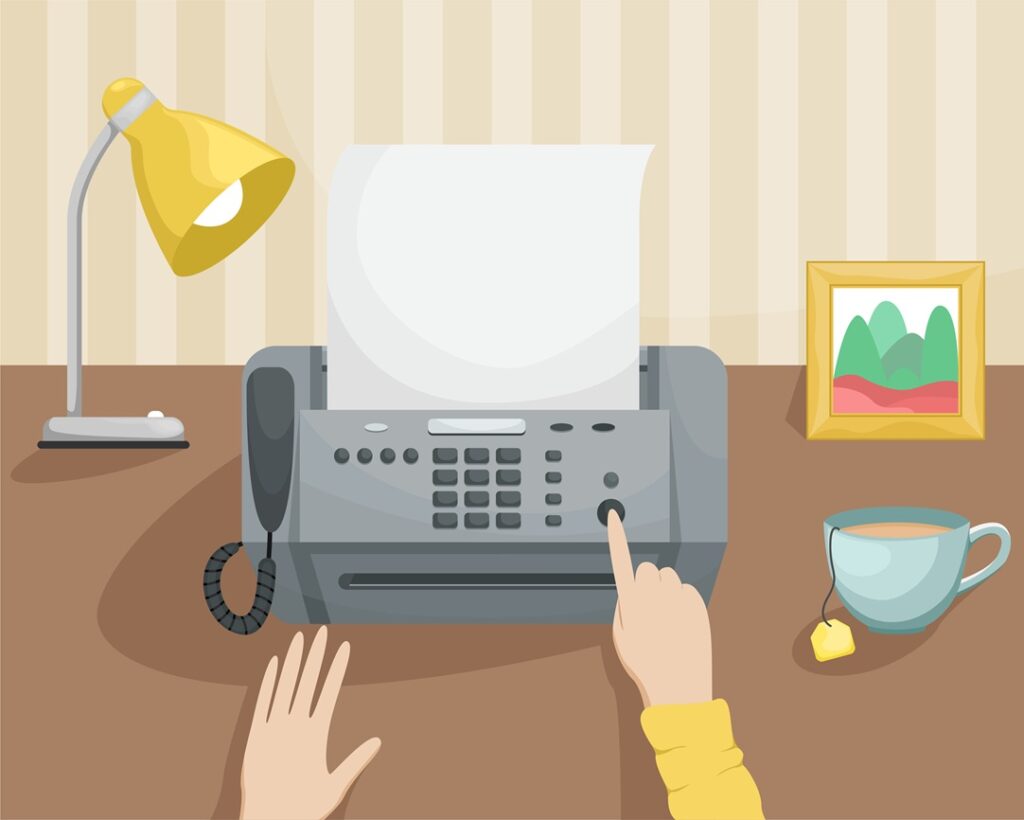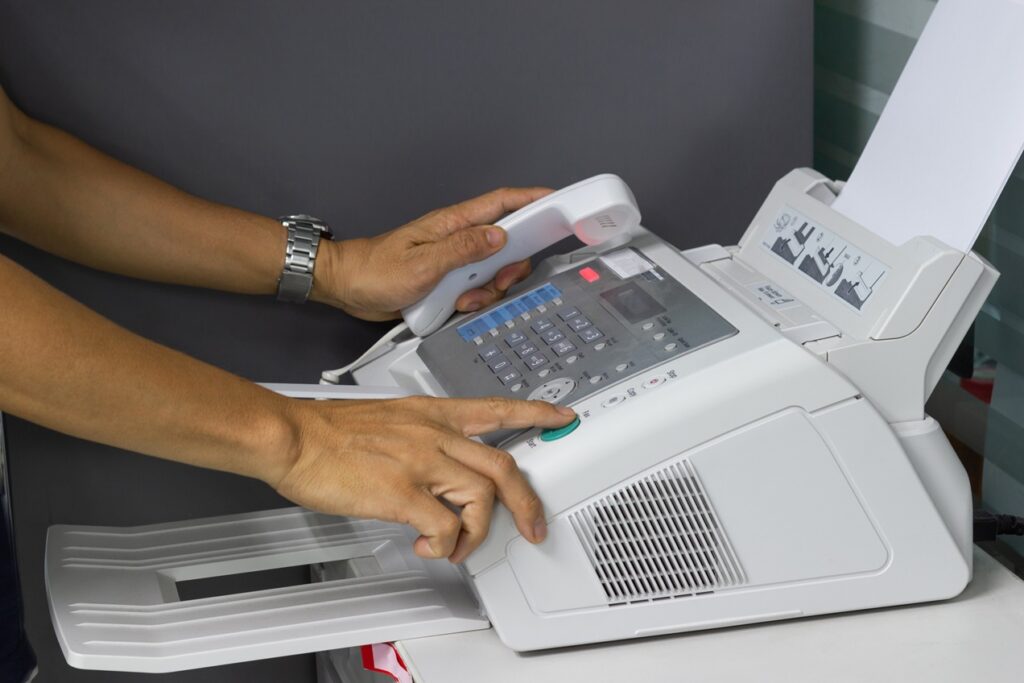With how quickly technology moves, it might feel odd that faxing hasn’t disappeared altogether. But faxing holds its ground as a fast and reliable way to send hardcopy documents.
Faxing skips the extra steps of mailing, scanning, or printing, making it a go-to option for many. While digital communication faces growing risks, faxing offers a harder-to-compromise alternative.
Thankfully, you don’t need to dust off an old fax machine to send or receive faxes. Fax servers let you handle everything digitally, without the hassle of bulky equipment. They’re efficient, simple to use, and fit right into how you already work.
Here’s a look at how fax servers work and why they’re a smarter choice compared to fax machines.
What Is a Fax Server and How Does It Work?
A fax server (also referred to as a faxing software program) is essentially a system that allows you to send and receive faxes through your computer network or via cloud-based services eliminating the need for a fax machine.
It acts as the middleman, so to speak, handling the process of converting digital documents into fax format and vice versa.
There are three main types of fax servers, each suited for different business needs:
On-Premise Fax Servers
These servers are installed within a company’s office and connected directly to internal networks and phone lines. They are often used in industries like law or finance, where keeping data within the organization is a priority. For example, a law firm might use an on-premise server to process sensitive case files while maintaining full control over document handling.
Cloud-Based Fax Servers
Cloud-based servers rely on the internet to send and receive faxes. They’re hosted by third-party providers, removing the need for in-house hardware or maintenance.
FaxBurner is an excellent example of a cloud-based faxing solution. It allows users to send and receive faxes from a computer, tablet, or phone using a simple app or web interface. Features like free fax numbers and cloud storage make it a convenient option for businesses and individuals.
Hybrid Fax Servers
Hybrid fax servers combine the benefits of both on-premise and cloud-based systems. They let companies process important documents locally while using cloud-based tools for additional storage or remote access.
For instance, a healthcare organization could use a hybrid system to store patient records on-site while making faxed prescriptions available to remote staff.
How Fax Servers Work
Here’s how a fax server works step by step:
-
-
- Submitting a Document: You upload a document to the fax server through an email, fax app, or web interface. If the document is in hard copy, you can use a scanner or a phone’s camera to create a digital version.
- Conversion Process: Once the document is uploaded, the fax server processes it by converting it into a specific format that traditional fax machines can read. This conversion is necessary because fax machines use a standardized protocol to receive and interpret data.
- Transmission: After conversion, the server sends the fax directly to the recipient’s number. If the recipient uses a standard fax machine, the document is transmitted over the phone line. For those using an online fax service, the fax arrives as a digital file, which is delivered to their email or stored in their online account for easy access.
- Receiving and Storing Faxes: The server processes incoming faxes and delivers them to you, and you can view them on a computer, smartphone, or tablet. Many fax servers, including cloud-based services, provide storage options, so you can access past faxes anytime without handling physical copies.
-
To operate a fax server effectively, a few technical components are needed:
-
-
- Hardware Requirements: A computer or server to run the fax software. For on-premise setups, a fax modem may be required to connect to traditional phone lines.
- Fax Server Software Requirements: Fax server software to manage the process of sending and receiving faxes.
-
Fax servers also integrate seamlessly with existing office systems. For example, you can send a document directly from Word or Excel using the “print to fax” option.
Similarly, email platforms like Outlook can link to the fax server, letting users send faxes by composing an email. This integration helps streamline workflows, saving time and reducing the need for additional steps.
Why Use a Fax Server?
Fax servers make faxing simpler, faster, and much less of a hassle. They come with several benefits that can help businesses and individuals work more efficiently, and these include:
Save Time and Boost Productivity
Fax servers cut out the extra steps that come with traditional fax machines. Instead of printing documents, walking over to a machine, and waiting for the fax to go through, you can send a fax directly from your computer or phone.
Incoming faxes are delivered straight to your inbox or app, so there’s no need to check a machine or deal with paper jams. These time-savers mean you can focus on more important tasks.
Simplify Document Management
With fax servers, all your faxes are stored digitally. You don’t need to keep piles of paper or dig through a filing cabinet to find a document.
Everything is organized and easy to access from your computer or smartphone. Many fax servers even let you search for specific files, making it quicker to find what you need.
Whether you’re at the office, working remotely, or traveling, a fax server lets you send and receive faxes wherever you are. Services like FaxBurner make it possible to fax documents right from your phone or laptop, no matter where you’re located.
Reduce Costs
By switching to a fax server, you eliminate the need for fax machines, dedicated phone lines, paper, and ink. This can lead to significant savings over time, especially for businesses that rely on frequent faxing.
Use Cases for Fax Servers
Fax servers are versatile and work for businesses and individuals in many different situations.
-
-
- Healthcare: Medical offices use fax servers to share patient information and handle insurance paperwork without needing physical copies.
- Law Firms: Lawyers can send contracts and other legal documents quickly while keeping a digital archive for future reference.
- Small Businesses: From invoices to purchase orders, fax servers help small businesses handle paperwork efficiently without investing in extra equipment.
- Remote Workers: Fax servers make it easy to send and receive documents without needing access to an office or fax machine.
-
Fax Servers vs. Traditional Fax Machines
If you’re wondering how fax servers stack up against old-school fax machines, here’s a quick comparison to help you see the differences at a glance.
| Feature | Fax Servers | Traditional Fax Machines |
| Equipment Required | Computer, software, internet or phone line | Physical fax machine, phone line |
| Ease of Use | Send/receive faxes digitally via apps or email | Manual process requiring paper and phone line |
| Cost | Lower long-term costs (no paper, ink, or extra phone lines) | Higher costs (paper, ink, machine maintenance) |
| Accessibility | Accessible from anywhere with internet | Limited to the machine’s physical location |
| Storage | Digital storage for easy access and search | Physical copies requiring filing space |
| Scalability | Supports multiple users simultaneously | One user at a time, creating potential delays |
The Future of Fax Servers: What’s Next?
Fax servers have come a long way, but they’re not stopping here. With advancements in technology, new features and trends are emerging that can make faxing even more efficient and user-friendly. Here are some key trends to watch:
AI Integration
Artificial intelligence is starting to play a role in improving fax server functionality. AI-powered features can automatically sort incoming faxes, extract key information, and even recognize patterns in documents.
For example, an AI tool could scan an invoice faxed to your business, pull out important details like amounts and due dates, and update your accounting software without any manual input.
Enhanced Document Recognition
Optical character recognition (OCR) is already a standard feature in many fax servers, but future systems are likely to take it further. Advanced OCR combined with AI could read handwritten notes, multilingual documents, or even identify specific forms and route them to the right person automatically.
Cloud-First Solutions
As businesses continue to shift to remote and hybrid work models, cloud-based fax servers are becoming more essential. Future fax servers will likely focus even more on seamless integration with cloud storage services, making it easier to access and manage faxes from anywhere.
Tighter Integration with Business Tools
Fax servers are increasingly connecting with other tools, like customer relationship management (CRM) systems, document management platforms, and collaboration apps.
This trend will likely deepen, making faxing a fully integrated part of workflows. Imagine being able to send or receive faxes directly within your project management tool without switching apps.
Eco-Friendly Innovations
As sustainability becomes a bigger focus, future fax servers may offer features like detailed reporting on paper and energy savings or partnerships with carbon offset programs. This aligns with businesses’ increasing efforts to reduce their environmental impact.
Key Takeaway
Fax servers are still an important part of document communication because they make faxing faster, simpler, and more cost-effective. They’ve replaced outdated machines with modern systems that fit seamlessly into today’s workflows.
With features like digital storage and app integration, fax servers save time and allow you to handle documents from anywhere. The future of fax servers is even more promising–they’re becoming smarter, more integrated with other platforms, and easier to use.
Services like FaxBurner are at the forefront of this shift, that is, making faxing easy and affordable for businesses and individuals alike.




